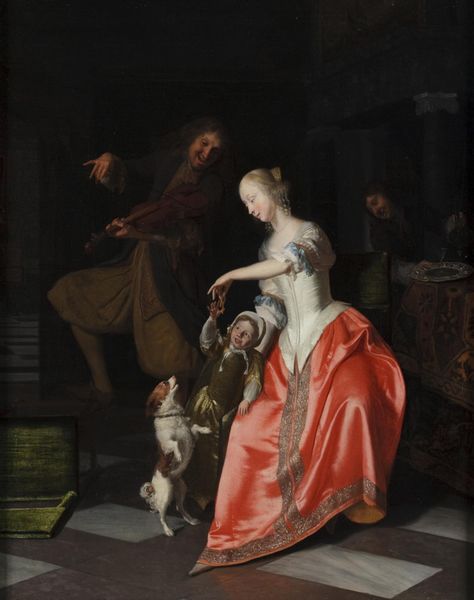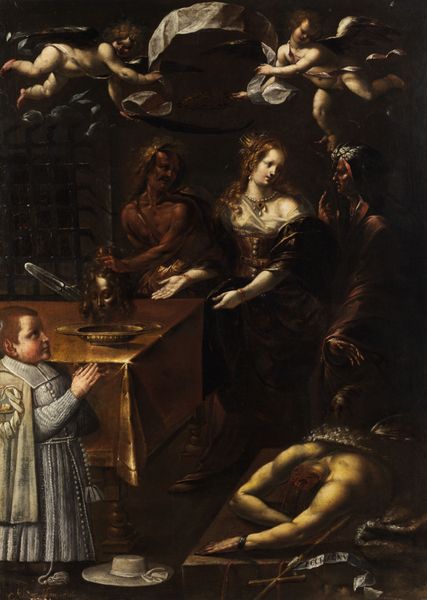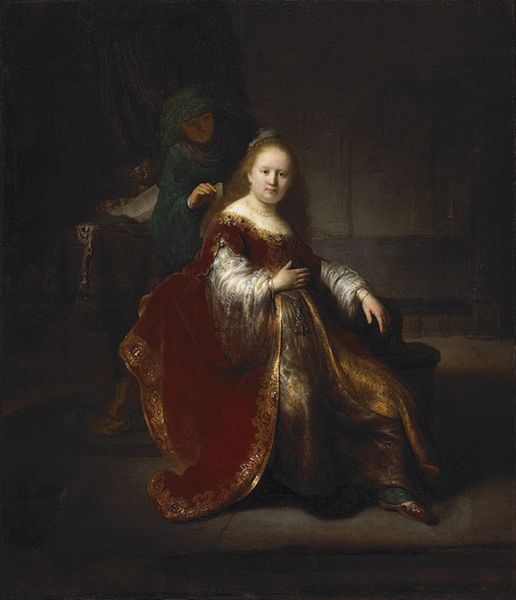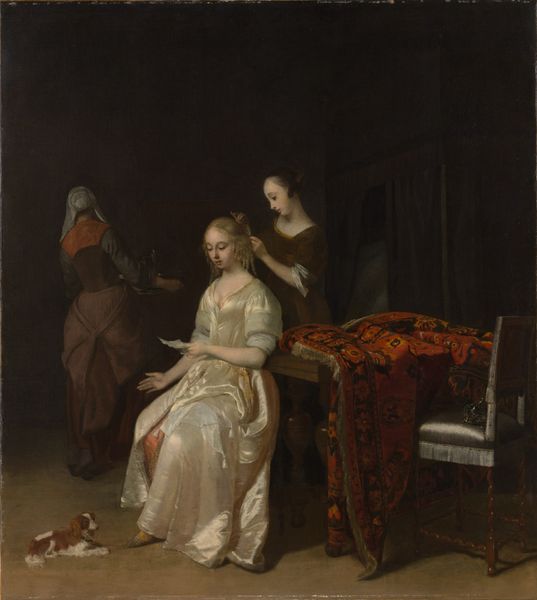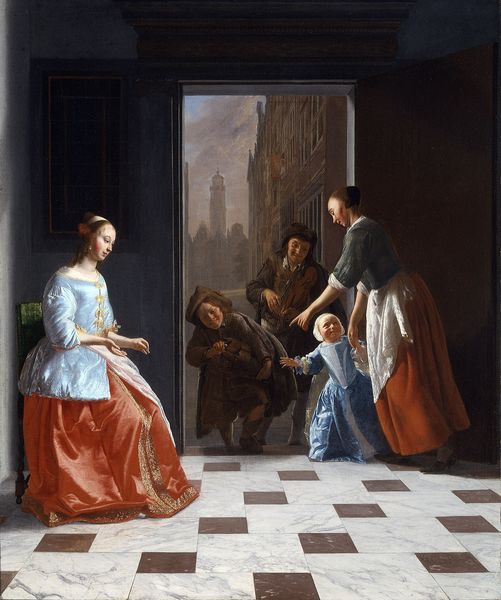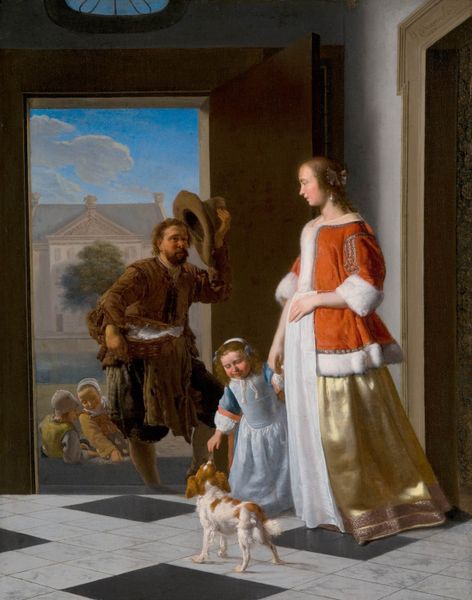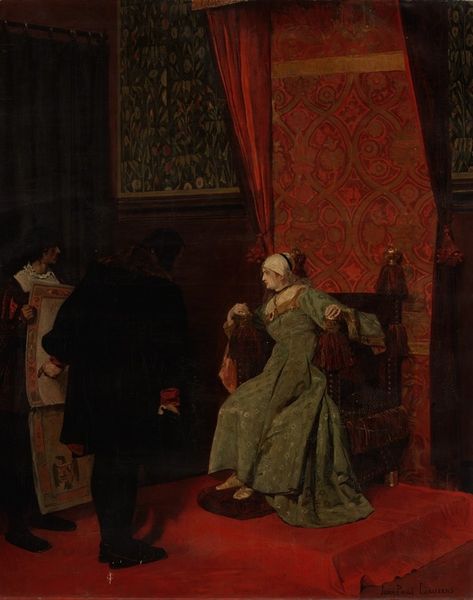
Esther reading Haman's Decree of the Extermination of the Jews 1630s
0:00
0:00
painting, oil-paint, wood
#
portrait
#
narrative-art
#
baroque
#
painting
#
oil-paint
#
figuration
#
wood
#
genre-painting
#
history-painting
#
academic-art
#
realism
Dimensions: 99.2 cm (height) x 82 cm (width) x 9.8 cm (depth) (Brutto), 74.7 cm (height) x 57.3 cm (width) (Netto)
Editor: This is Salomon Koninck’s "Esther reading Haman's Decree of the Extermination of the Jews," from the 1630s, an oil on wood panel. It's quite dark, but the textures of the fabrics seem really opulent. What do you see in this piece beyond the immediate narrative? Curator: I see a powerful representation of vulnerability and resistance within patriarchal structures. The darkness isn't just a stylistic choice; it reflects the precariousness of Esther’s position, and, indeed, of the Jewish people in exile. Notice the older woman behind Esther, perhaps a servant. How does her presence affect your reading of the scene? Editor: It makes me think of support systems, but also of the social hierarchies at play. She’s physically present but positioned as a secondary figure. Curator: Precisely. Consider how Koninck is staging the drama here. Esther holds the decree—the instrument of potential genocide—but her power is contingent on navigating the male-dominated court. This painting becomes a potent symbol of how marginalized groups must often operate within and against systems of oppression. Do you see any resonances with contemporary issues of social justice? Editor: Definitely. The idea of reading—interpreting texts of power, and then strategically responding to them—feels relevant to many ongoing struggles against discrimination. It's interesting to think of Esther as actively resisting, not just passively accepting her fate. Curator: Exactly. The painting, then, is not just a historical depiction, but a meditation on the strategies of resistance, on using knowledge and influence to challenge oppressive systems. This work reflects both historical concerns, and timeless human responses to the precarity of identity and survival. Editor: This really encourages you to think beyond the surface and the immediate story of the artwork. Curator: That’s right, to view the past through the lens of contemporary concerns. The layers of interpretation really bring Esther's story alive.
Comments
No comments
Be the first to comment and join the conversation on the ultimate creative platform.
